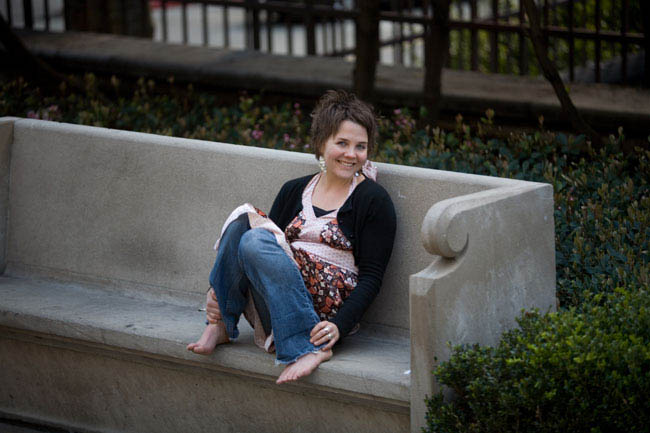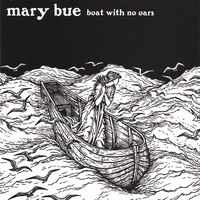Mary Bue: Art Imitating Life?
Rich Horton hears Mary Bue; she continues to evolve. Her work has developed more complexity and texture; she's moving beyond the singer/songwriter niche into music more broadly imagined.


If you’re a music fan, there is nothing like cracking the wrap off a new CD and perusing the cover art, checking out the credits while listening to the first few tracks and getting a feel for the new sounds. The cover art for Mary Bue’s CD A Boat With No Oars features a woman in the middle of a boat in the water with—right, no oars.
This artwork might have more accurately represented her first two albums, which seem to be just her and usually a single instrument. With her new CD she had plenty of help and went with a back-up band for a majority of the songs.
Emotionally charged piano-based songs mix with some unique instruments and some very talented backup. This is laid down next to other more basic tracks with only piano and voice. On the last track, “Cypress Tree,” there’s a low-fi acoustic guitar.
Most piano-based female artists are compared to Sarah Mclaughlin and Tori Amos (Bue could be as well). But she seems to be a little more dangerous.
“Salt and Pepper” with its unique piano riff is the song that caught my attention, reminding me of one of my favorite artists and music activists: Jenny Toomey. She was in the band Tsunami and ran the record label Simple Machines. Like Toomey, Bue has a vulnerable but strong air to her voice.
Bue grew up in Princeton, Minnesota, which is just north of the Twin Cities. Now it’s a growing town, but when she lived there it had fewer than 4,000 people. She left in 1998 to attend college in Duluth.
After releasing her second album and finishing college Bue moved to Providence, Rhode Island, where she lived from 2003 – 2005 and during that time wrote a majority of the songs that ended up on Boat With No Oars. She also won an artist residency in Florida in 2006 where she was able to spend a month writing songs in “a perfect setting.”
Bue remarks, “It was such a wonderful experience, I got an entire month in to myself in this house that one of the homeowners donated. It was probably a million-dollar cottage that was a five-minute walk to the beach. All I had to do is write my music, go running on the beach, and hang out with these amazing artists.”
Her songwriting process starts simply. She likes pieces to grow naturally until they work.
“I usually write poems first, and then I’ll sit down at the piano or the guitar and just kind of play and see if something clicks. I don’t really have a goal in mind when I am writing a song. It just sort of comes,” said Bue.
After putting out two albums, it would seem that it would be easier for a musician to write and record a new one. In Bue’s case, since she added a backing band and had certain ideas about the arrangements, it made things a little more complicated.
“It was harder, because I added so much instrumentation. So it took a lot longer and I thought it about a lot harder,” said Bue.
Part of being an independent musician is working a day job, btween and among touring, recording, and writing. Bue has slowly been doing less and less of the day job and been able to spend more time on her music. She moved to Minneapolis about a year ago, and with the help of a booking agent and flexible work arrangements she also has been able to get out on the road.
“When I am here, I try to work a lot and save, but I’ve been really lucky with the places I have worked where they’ll let me go on tour and take me back when I come back,” said Bue.
Whether Bue’s album cover is a metaphor for being a solo artist, or for still searching for what she eventually become, she has made a great start and middle of her music career. She seems to have the ambition and heart of someone who won’t let it bother her if her boat gets a hole or the waves get too high.
I look forward to the songs she hasn’t recorded yet. There has been talk of something with an accordion, all rewards for someone who doesn’t mind leaving her comfort zone.